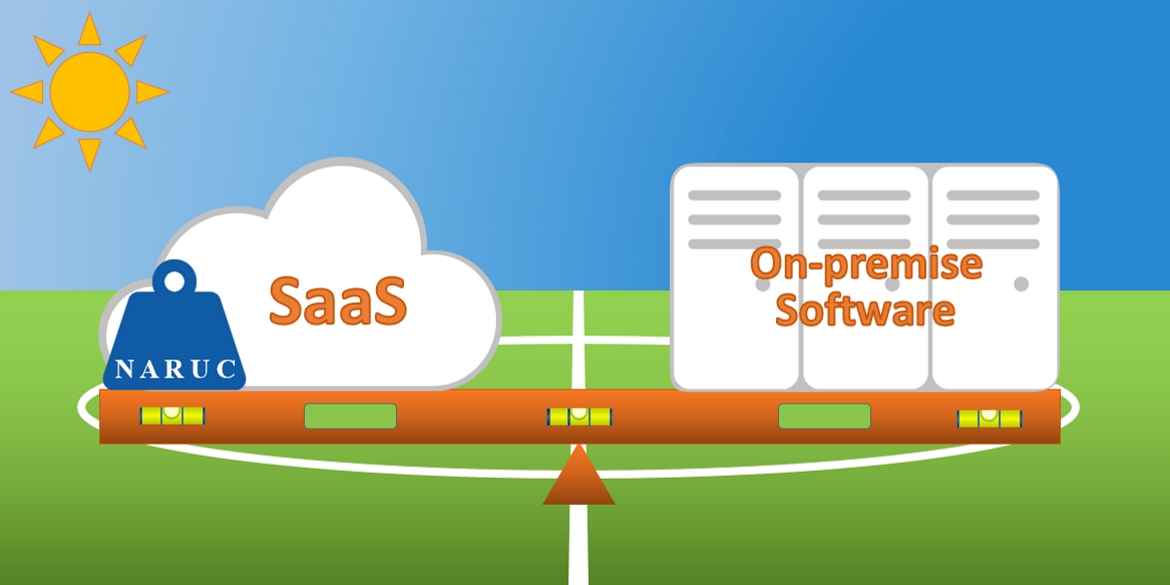In November 2016, the National Association of Regulatory Utility Commissioners (NARUC) approved a resolution encouraging State regulators to level the playing field for cloud software and on-premise software. Why is this resolution critically important for utilities? Let’s examine the current state.
The cloud revolution
New service and delivery models are disrupting a wide swath of industries. Everywhere we look, rental and subscription plans are challenging traditional ownership. Companies like Uber, Lyft and Zipcar are turning the transportation industry on its ear. One example – GM recently announced an investment in Lyft and signaled its interest in new mobility services, such as EVs, car-sharing, ride-sharing and ride-hailing.
Similarly, in the software industry, salesforce.com, Microsoft’s Office 365 and others have led the transition to cloud and software-as-a-service (SaaS) models. These models are rewriting the book on how companies deploy and pay for software applications. The benefits of cloud and SaaS models are many, including:
- Quicker time to value – Companies can deploy and adopt cloud applications much more quickly than on-premise solutions. Reducing hardware, training, and heavy integration adds up to real cost savings.
- Flexibility – Companies can ramp cloud solutions up and down as programs and business models change. “Pay only for what you need” becomes the mantra.
- Security – According to an IDC survey, 76% of utility respondents now recognize that cloud providers can offer better security than that offered by their own organization’s IT security team. Cloud providers specialize in assuring information security and mitigating vulnerabilities.
- Innovation – Software vendors large and small focus their R&D on cloud applications. Rather than waiting for annual releases and costly upgrades of on-premise software, customers can now continuously access the latest features in SaaS software.
- Accessibility – Administrators and program managers can grant secure remote access to employees, customers, and business partners. These external users are already very familiar with web and mobile applications.
Utilities and the cloud
These cross-industry benefits are all very relevant to utilities as they face a host of new challenges related to the ongoing energy transformation. A short list of those challenges includes rising customer expectations (based largely on other industries’ faster adoption of cloud technologies) increasing distributed energy resources, and launching new rates and programs.
In some ways utilities were among the first industries to deliver their product as a service. Unlike cars or other consumer goods, customers have paid for utility services based on monthly consumption. Therefore, it is somewhat surprising that utilities are laggards in terms of adopting software as a service for their own needs.
There is a real cost to falling behind. By continuing to rely on multi-year deployment projects of on-premise software, utilities are making long term investments in platforms that lack the latest security, integration, and user experience capabilities.
Accounting drives decisions
The challenge for utilities is that while they can treat on-premise software as a capitalized investment (CapEx) that earns a rate of return, in most cases they must treat cloud software as a less-favorable operating expense (OpEx). Despite all the benefits outlined above, this industry practice provides a disincentive for the industry to use cloud solutions.
Are changes coming?
Utility regulators are starting to question the wisdom of this disincentive. The Illinois Commerce Commission is one leader in this effort. Under the direction of Chairman Brien Sheahan, they have begun a Notice of Inquiry, a non-binding, fact-finding proceeding to explore the economic and technical issues associated with cloud computing solutions.
One of their conclusions is, “As innovation becomes increasingly necessary for grid modernization, the time is ripe for public utility commissioners to give strong consideration to the regulatory treatment of cloud-based solutions and to take advantage of the opportunity to be technology enablers in [sic] as we enter the Fourth Industrial Revolution.”
NARUC weighs in
With this context, the importance of NARUC Resolution CI-1 (“Resolution Encouraging State Utility Commissions to Consider Improving the Regulatory Treatment of Cloud Computing Arrangements”) becomes clear. Among other things the resolution states:
- “To thrive in the future, utilities may need to modernize and transform their business operations. A key element of this may be access to state-of-the-art commercial cloud computing services, which is increasingly delivered via a “cloud-based” or “software-as-a-service” model.”
- “Utilities should be free to make software investments based on which option best meets both the needs of the utility and its customers, rather than how the investment will be treated for accounting purposes.”
- “NARUC encourages State regulators to consider whether cloud computing and on-premise solutions should receive similar regulatory accounting treatment, in that both would be eligible to earn a rate of return and would be paid for out of a utility’s capital budget.”
Sunny skies ahead for cloud software
With efforts like the Illinois Notice of Inquiry and the NARUC Resolution underway, utilities can expect positive changes coming from their regulators. Indeed, for utilities and the cloud, we forecast sunny skies ahead.
